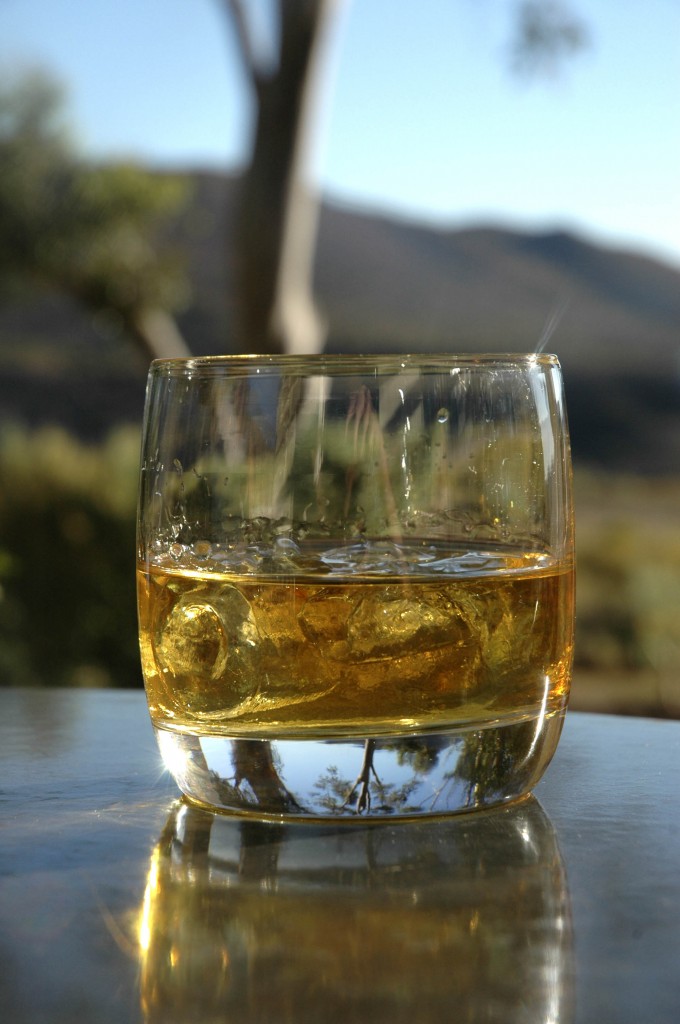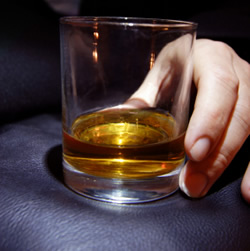Table of Contents
The history of alcohol in America goes hand in hand with the history of alcoholism and alcohol rehab. From the time fermented beverages were first produced (up to 10,000 years before the birth of Christ, according to prehistoric archaeologists), humans have been aware of alcohol’s properties as an intoxicant as well as a source of pleasure and a means of celebration. Throughout the history of the United States, Americans have struggled to find a balance between the healthy consumption of alcohol and the prevention of alcohol addiction and alcohol-related mortality.
Alcohol in Colonial Times

In Europe in the 1600s, water was considered to be less sanitary than fermented beverages like wine and beer. Public sources of water were often contaminated, but the processes involved with producing alcohol made it safe to drink. When the Puritan settlers came from England to the New World in the early 1600s, they brought an abundant supply of beer. In fact, the amount of beer on the Mayflower surpassed the supply of water.
Alcohol was freely available to people of all ages in Colonial times. It wasn’t uncommon for men, women and children to have beer or ale with every meal. Alcoholic beverages were used to treat a variety of illnesses, increase strength and to celebrate just about any occasion, from weddings and christenings to public trials and funerals.
Separated from their European roots, early Colonists had to learn how to make beer, cider and wine from the supplies that grew naturally in the New World, such as evergreen branches, fruit and berries. Meanwhile, hop seeds were imported from England so the settlers could also make beer in the traditional way. In the mid-1600s, rum was imported into America from the Caribbean, and this distilled beverage quickly became popular throughout the colonies.
Early Americans believed that alcohol was a gift to human society. However, drunkenness was a sin and an indication of moral weakness, according to the Colonial Williamsburg Foundation. The early Americans believed that anyone who drank too much could simply sober up by exercising enough willpower. Benjamin Rush, a physician who practiced in Philadelphia in the late 1700s, was one of the first Americans to propose the idea that alcohol addiction is not a matter of will, but a disease that can only be treated by avoiding alcohol altogether. Rush’s theory was not widely accepted by his peers, but his ideas about alcoholism would have a strong influence on American temperance movements in the 19th and 20th centuries
The Early Temperance Movement
 Alcohol was an integral part of American culture from the time the first colonies were established. However, the growing popularity of rum, whiskey and other distilled spirits caused a reaction against the effects of excessive alcohol consumption. A public push for temperance — a limitation of alcohol consumption or a total abstinence from alcohol — began as early as 1789, with the founding of the first American temperance society in Connecticut. Additional societies were soon formed in other parts of the country, including the American Temperance Society, the Women’s Christian Temperance Union and the Anti-Saloon League.
Alcohol was an integral part of American culture from the time the first colonies were established. However, the growing popularity of rum, whiskey and other distilled spirits caused a reaction against the effects of excessive alcohol consumption. A public push for temperance — a limitation of alcohol consumption or a total abstinence from alcohol — began as early as 1789, with the founding of the first American temperance society in Connecticut. Additional societies were soon formed in other parts of the country, including the American Temperance Society, the Women’s Christian Temperance Union and the Anti-Saloon League.
Women who had been abused or whose children had been neglected by alcoholic husbands were strong sponsors of these temperance groups, which based many of their beliefs about moderation and abstinence on the theories of Dr. Benjamin Rush. Rather than being considered a gift from God and a healing substance, alcohol was viewed as a source of crime, violence and poverty.
In 1851, Maine became the first dry state by prohibiting the consumption and sale of alcohol. Maine’s dry law, which fueled the temperance movement that eventually led to national Prohibition in 1919, couldn’t stop the state’s citizens from making or using alcohol. According to the Portland Press Herald, alcohol was still manufactured by farmers, who made their own wine and cider from their crops. These illegal beverages were sold in “kitchen bars,” while grocery stores and drug stores sold alcoholic products for medicinal purposes or as food additives.
- Learn More
The temperance movement lost some of its momentum during the Civil War, when it was overshadowed by the national conflict. In 1862, President Abraham Lincoln imposed a tax on alcoholic beverages to cover some of the expenses of the war. In the 1880s, New York and Pennsylvania passed laws making it mandatory to teach students in the public schools about the dangers of alcohol abuse.
The 20th Century and Prohibition In the early 20thcentury, public opinion in America turned against heavy alcohol consumption. In 1910, New York State passed the first law against driving while intoxicated. Ten years later, the US government mandated the ban of alcohol manufacturing, sales and consumption with the Eighteenth Amendment to the Constitution in 1920, and the era of national Prohibition officially began.The Volstead Act, or the National Prohibition Act, established the rules supporting the Eighteenth Amendment. In the early days of Prohibition, these sweeping changes seemed to have a positive effect on American society. The U.S. National Archivesnotes that the consumption of alcohol was reduced by 30 percent initially, and the consumption of hard liquor by 50 percent. But as time went on, the illegal production of alcohol, or “bootlegging,” increased. Bootleg alcohol was sold at underground establishments called “speakeasies.” By 1925, historians estimate that there were as many as 100,000 speakeasies in New York City. The laws of Prohibition were difficult to enforce, and the black market for liquor fed the growth of organized crime. The effort to ban alcohol throughout the United States ultimately failed. Americans in urban areas objected to the fact that a movement sponsored primarily by rural politicians had such a far-reaching effect on every segment of society. Meanwhile, as the economy faltered and unemployment rose in the 1920s and early 1930s, the US government became aware of the impact of Prohibition on state and federal tax income.
In the early 20thcentury, public opinion in America turned against heavy alcohol consumption. In 1910, New York State passed the first law against driving while intoxicated. Ten years later, the US government mandated the ban of alcohol manufacturing, sales and consumption with the Eighteenth Amendment to the Constitution in 1920, and the era of national Prohibition officially began.The Volstead Act, or the National Prohibition Act, established the rules supporting the Eighteenth Amendment. In the early days of Prohibition, these sweeping changes seemed to have a positive effect on American society. The U.S. National Archivesnotes that the consumption of alcohol was reduced by 30 percent initially, and the consumption of hard liquor by 50 percent. But as time went on, the illegal production of alcohol, or “bootlegging,” increased. Bootleg alcohol was sold at underground establishments called “speakeasies.” By 1925, historians estimate that there were as many as 100,000 speakeasies in New York City. The laws of Prohibition were difficult to enforce, and the black market for liquor fed the growth of organized crime. The effort to ban alcohol throughout the United States ultimately failed. Americans in urban areas objected to the fact that a movement sponsored primarily by rural politicians had such a far-reaching effect on every segment of society. Meanwhile, as the economy faltered and unemployment rose in the 1920s and early 1930s, the US government became aware of the impact of Prohibition on state and federal tax income.In 1933, President Franklin Roosevelt passed the Cullen-Harrison Act, an amendment to the Volstead Act, allowing the production of wine and beer with a low alcohol content. In December of that same year, the Eighteenth Amendment was repealed by the Twenty-first Amendment to the Constitution, and Prohibition came to an end.
Alcoholics Anonymous and the 12 Steps
The history of the recovery movement parallels the history of alcohol use in America. In the early 19th century, a religious organization called the Oxford Group was established to promote values like self-improvement, moderation and outreach to others. Many of the practices of this group, such as taking a self-inventory and making amends to others, would later be integrated in to the 12 Steps of Alcoholics Anonymous (AA).
After Rowland H., one of the early figures in the history of AA, visited the Swiss psychoanalyst Carl J. Jung for help with his alcohol addiction, Rowland was referred to the Oxford Group as a source of spiritual guidance. Rowland and Ebby T., a fellow alcoholic, were able to stop drinking by practicing the principles of the Oxford Group. Ebby later introduced these principles to Bill W., one of the founders of Alcoholics Anonymous.
Once a successful stockbroker, Bill W. hit bottom with his alcoholism at the age of 39. After multiple failures at “drying out,” Bill had a spiritual awakening in 1934 while undergoing treatment for chronic alcoholism at Towns Hospital in Manhattan. As a result of Bill’s awakening and his subsequent sobriety, the spiritual component of AA became one of the group’s most powerful recovery tools. In 1934, Bill shared his experiences with Robert S., a physician who was struggling with alcohol addiction. Robert S., or “Dr. Bob,” became one of the founding members of AA, which was officially formed in 1935. In that same year, the American Medical Association recognized alcoholism as a disabling physical condition requiring medical treatment.
Since the 1930s, the principles of AA have been implemented in addiction recovery programs throughout the country. Membership in this anonymous organization is free of charge, but voluntary service to the organization and outreach to other alcoholics are expected as part of the recovery process. AA is based on the premise that alcoholism is a spiritual as well as a physical disease, and that surrendering to a higher power of one’s own choosing is the only way to achieve lasting sobriety. With the guidance of a sponsor, members complete 12 steps that lead them to recovery.
Alcohol in America Today
 In the 20th century, awareness of the dangers of alcohol abuse grew. In 1944, the U.S. Public Health Service recognized alcoholism as one of the most serious threats to public health in the country. The National Traffic Highway Safety Association notes that in the 1960s, the Grand Rapids Study — an epidemiological project that evaluated the effects of alcohol on driving — confirmed the connection between alcohol intoxication and impairment while operating a motor vehicle. Although laws have been established throughout the country to prevent drunk driving and reduce the number of alcohol-related traffic fatalities, drunk drivers remain one of the biggest threats to public safety. In 1989, Mothers Against Drunk Drivers (MADD) was formed to stop underage drinking and promote awareness of the problem of drunk driving.
In the 20th century, awareness of the dangers of alcohol abuse grew. In 1944, the U.S. Public Health Service recognized alcoholism as one of the most serious threats to public health in the country. The National Traffic Highway Safety Association notes that in the 1960s, the Grand Rapids Study — an epidemiological project that evaluated the effects of alcohol on driving — confirmed the connection between alcohol intoxication and impairment while operating a motor vehicle. Although laws have been established throughout the country to prevent drunk driving and reduce the number of alcohol-related traffic fatalities, drunk drivers remain one of the biggest threats to public safety. In 1989, Mothers Against Drunk Drivers (MADD) was formed to stop underage drinking and promote awareness of the problem of drunk driving.
Alcohol abuse remains a serious problem in the United States. Government organizations like the National Institute on Drug Abuse (NIDA), the Substance Abuse and Mental Health Services Administration (SAMHSA) and the Centers for Disease Control and Prevention (CDC) are dedicated to tracking the effects of alcohol on public health. According to statistics gathered by the CDC, alcohol abuse is one of the top lifestyle-related causes of death in the country:
- Alcohol abuse accounts for around 80,000 deaths in the US per year.
- Every year, over 2 million years of potential life are lost because of heavy alcohol consumption in the United States.
- In 2006, alcohol abuse accounted for over 1 million emergency room visits and almost 3 million doctor visits.
- In that same year, the costs of alcohol abuse to the US economy were almost $224 billion.
On a personal level, each American creates his or her own history with alcohol. Whether you’re a moderate drinker, a teetotaler, a binge drinker or an alcoholic, this substance has probably affected your life. Many of us have struggled with an addiction to alcohol, and many of us have lost a friend or family member to the effects of heavy drinking.
 Throughout its history, alcohol has played both negative and positive roles in American culture.
Throughout its history, alcohol has played both negative and positive roles in American culture.
Addiction treatment centers like ours here at Axis offer hope to people who are fighting to rebuild their lives in the wake of alcoholism. When you’re ready to reach out for help, we’re here to provide support and information.
Call our admissions team at any hour of the day or night to find out how we can help you create a secure, sober future.


